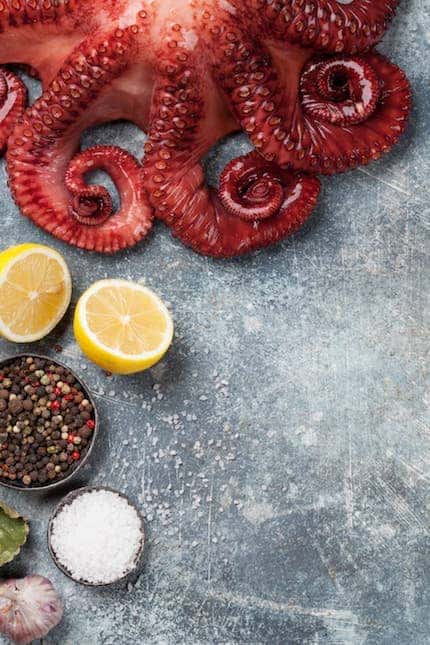Everything You Need and Nothing You Don’t
Your key to peace of mind is a kitchen inventory.
Certain things in your household are so essential to daily life and used so frequently that you buy them without hesitation and always have a supply on hand. I’m thinking of toilet paper.
The same principle applies to your kitchen, where items such as carrots and mayonnaise are key ingredients that should be taken for granted.
That’s why you should keep a basic inventory that includes everything you need to make whatever you want, the only additional requirement being a seasonal vegetable or maybe a fresh joint of meat.
An inventory is not a “shopping list.”
It’s a record of household possessions like what you give to an insurance agency so that when something goes missing you can see exactly what it is and replace it.
Of course, an item like a jar of pickles involves a much higher rate of replacement than Granny’s pearl necklace. So, your basic inventory actually represents a system: You have the sack of flour in your kitchen, which you happen to be using, and you have the one located someplace else, which remains unopened and ready as a replacement.
When you’ve finished with the one in your kitchen, you reach for the backup. And when you get ready to go to the supermarket, your inventory reminds you to put another backup on your shopping list.
Your inventory doesn’t have to be a list. It could be a closet with neatly labeled shelves. My apartment isn’t spacious enough to afford a larder like this, so I use a list.
That list appears below. I’ve kept it for years, and it reflects my experience preparing many different types of dishes from a broad cross-section of Western cuisine. Feel free to consider it as a foundation for your own.
Nothing on the list is arbitrary. Dijon mustard, for example, may not be the one you reach for when you dress your hot dog, but its sulphuric zing is integral to many sauces and vinaigrettes, so I recommend having it on hand, anyway.
It’s a conservative list. I omit items that, while useful, aren’t absolutely necessary. Neither do I include things particular to my own affairs (my wife’s potato chip hoard, for example).
I have plenty to say about each of the products below and the brands that I prefer; I’ll post recommendations, eventually.
Sign up to my newsletter in the meantime, and get updates delivered straight to your inbox. This is a new website, with new additions appearing frequently.
Now, the list:
- Your Fridge
- Condiments
Mayonnaise
Mustard (Dijon)
Tabasco sauce
Worcestershire sauce
- Dairy
Cheese
firm type (e.g., cheddar & Gruyère)
hard type (e.g., Parmesan)
Cream
whipped (aerosol can)
Milk
- Meat
Bacon, thickly cut
Sausage, fully dried (e.g., Genoa salami & pepperoni)
- Pickles & Preserves
Capers
Cucumbers (i.e., savory dill pickles)
Olives
black
Peppers, roasted
Tomatoes, sun-dried & packed in oil
Jam
light (e.g., apricot & rhubarb)
- Produce
Carrots
Garlic
Leeks
Lemons
Lettuce or salad greens
Onions, yellow
Parsley, flat-leaf
Potatoes
waxy (e.g., Yukon Gold & Maris Piper)
Shallots
- Freezer
Ice cubes
- Your Cupboards
- Bread
Croutons (i.e., 1½-2 in. cubes of bread, dried)
Crumbs, super-fine (e.g., Panko)
- Confectionery
Chocolate, “semi-sweet” (i.e., 50-60% cocoa mass)
Cookies suitable for pastry crusts and other desserts
ginger snaps
shortbread
Honey
Spreads (e.g., peanut butter & Nutella)
- Flour & Sugar
All-purpose flour (i.e., 10-11% protein content)
Super-fine sugar (i.e., “caster”)
- Fruits
Fresh (i.e., seasonal)
Dried
prunes
raisins
- Grains
Egg noodles
Pasta
shapes (e.g., macaroni & bowties)
Rice
wholegrain, “red” & “black” varieties (i.e., not “brown” rice, which no one really likes, anyway)
- Legumes
Chickpeas
Beans, white (e.g., cannelini & navy)
Lentils, green, (e.g., du puy)
- Meats
Canned pâtés & other potted meats (even Spam, why not)
Canned tuna, sardines & other oily fish
- Nuts
Hazelnuts
Walnuts
- Oils & Fats
Oil, extra-virgin olive
Oil or fat capable of withstanding high temperatures, such as:
refined safflower oil
refined “extra-light” olive oil (not “extra-virgin” olive oil)
refined peanut and corn oils
refined sunflower oil
refined canola oil
rendered beef tallow
- Seasonings
Bullion cubes, chicken
Herbs, dried
thyme
Mushrooms, dried (e.g., porcini or cèpes)
Salt
table variety (e.g., sea salts like Guerande & Maldon)
Spices
curry powder
nutmeg pods
peppercorns
paprika
saffron threads
vanilla extract
- Vinegar
Red (i.e., red wine)
White (i.e., white wine or cider)
- Wine
Red “table wine”
White “table wine”
- Other Consumables
- Brushes
Dish
Grouting (for the grooves of your pots & pans)
- Care & Cleaning
Baking soda
Bleach wipes
Cream of tartar
Dish liquid
Dishwasher detergent
Hand sanitizer (e.g., Purell)
Scrubbing powder
Bon Ami (for anything else)
Mineral oil (for cutting boards)
- Fasteners
Butcher’s twine
Rubber bands
- Gloves
Dish-washing
Disposable (i.e., latex-style)
- Paper, Plastic, Wood & Foil
Aluminum foil
Bags
oven (e.g., Reynolds “large”)
Ziploc-style
gallon (about 27 cm2)
Cling-wrap (e.g., Saran)
Paper
Toothpicks
 |
SHARE THIS ARTICLE
